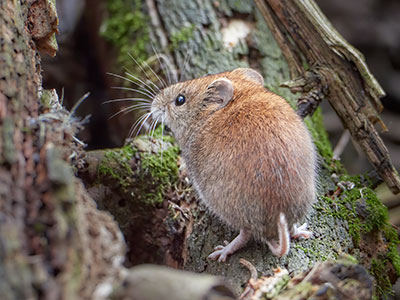Table of Contents
Vole trails, the unexpected signatures left behind by small rodents in your landscape, can transform your lawn into a perplexing maze of damage. Understanding these elusive creatures and the signs of their presence is crucial for maintaining a healthy, vibrant garden and preventing voles grass damage.
This article equips you with the knowledge to identify the subtle hints of voles in your lawn, and offers practical advice for natural vole tracks management. It outlines preventative strategies to mitigate voles in lawns and details humane removal techniques, aiding you in finding the balance between coexistence and control.
Identifying Damage from Vole Trails
As you stroll through your garden, keep an eye out for the telltale signs of vole activity. These small rodents can be quite the stealthy garden guests, but their presence is revealed through distinct markers:
- Vole Trails and Tunnels: Look for shallow, snakelike trails across your lawn, indicating vole tunnels just beneath the surface. Unlike moles, voles don’t leave behind mounds of soil. Instead, you might spot unraised tunnels with open entryways, a classic sign of vole tracks crisscrossing your yard.
- Plant Damage: Voles have a taste for greenery and can leave a path of destruction:
- Girdled Trees: Check the base of your trees for girdling, where the bark has been removed in a ring, potentially threatening the tree’s survival.
- Collapsed and Wilted Plants: Voles may feast on roots, causing plants to collapse or wilt, a clear indicator of voles grass damage.
- Harvest Havoc: If your fruits, berries, or seeds are mysteriously disappearing or showing bite marks, voles may be the culprits.
- Unseen Clues: Sometimes, voles give themselves away without a visual trace:
- Sounds and Smells: Listen for unusual scratching or squeaking noises, and be aware of strange odors that could signal a vole infestation.
- Structural Damage: Tiny holes in walls, hollow wood, or frayed wires might not just be wear and tear; they could be signs of voles in the lawn.
Monitoring for these indicators is crucial for early intervention. If your peaceful garden exploration turns into a vole investigation, remember that professional pest control services are just a call away to help manage the situation effectively.
Preventative Measures for Vole Trails
To keep your garden vole-free and your lawn pristine, consider these proactive strategies:
Landscape Maintenance:
- Trim and Tidy: Regularly cut back brush and keep your lawn mowed to reduce vole hiding spots.
- Debris-Free Zone: Remove woodpiles, fallen fruit, and pine needles to make your yard less inviting to voles.
- Mulch Mindfully: Avoid dense mulch that provides cover for voles; opt for thinner layers instead.
- Snow Clearing: During winter, keep snow away from the bases of trees and shrubs to prevent vole tunnels.
Physical Barriers:
- Mesh Fencing: Surround your garden with a half-inch mesh, extending 12 inches above and burying 6 to 10 inches below ground level.
- Tree Guards: Protect young trees with guards to prevent girdling.
- Hardware Cloth: Install barriers around vulnerable areas, ensuring they’re buried at least 6 inches deep to deter burrowing.
Natural Predators and Repellents:
- Encourage Predators: Attract owls, hawks, and foxes to your garden as natural vole control agents.
- Repellent Options: Apply natural or commercial repellents to make the area less appealing.
- Snap Traps: If someone invented a better mousetrap (or vole trap, in this case), they’d be a millionaire. Although there are plenty of options for traps, this is still an incredibly effective way to kill a vole quickly.
Implementing these measures will help you maintain a vole-free environment, preserving your garden’s health and your peace of mind.
Natural and Humane Removal Techniques
In your quest to maintain a healthy landscape, it’s essential to manage vole trails and mitigate voles grass damage with natural and humane removal techniques. These methods respect the ecosystem while keeping your lawn pristine:
Exclusion Methods:
- Wire Cylinders: Use hardware cloth with a mesh size of ¼-inch or smaller to create protective barriers around seedlings and young trees.
- Bury the wire 6 inches deep around the base to prevent voles from burrowing underneath.
- This physical barrier not only deters vole tracks but also safeguards the future growth of your plants.
Natural Repellents:
- Capsaicin and Thiram: These substances can effectively repel voles from your garden spaces.
- Predator Urine: A more unconventional but natural deterrent, mimicking the presence of vole predators.
Humane Trapping:
- Live Traps: Position these along vole runways or close to burrow entrances to catch voles without harm.
- Baiting: Use peanut butter as an enticing bait to lure voles into the traps.
- Check Traps Regularly: Of course, check your traps very regularly to see if you’re placing them in the correct areas. Finding the correct location for the trap is absolutely essential in actually making sure that they’re effective!
Although humane relocation methods feel better, it is often illegal to trap and relocate pests like voles. Please read up on your local laws about animal relocation before you decide to sidestep the traditional snap-trap..
When to Call the Professionals
When your peaceful lawn becomes a bustling hub for vole activity, it’s time to take action. While the natural and humane techniques you’ve implemented are a great start, sometimes the vole trails, tunnels, and the resulting voles grass damage can persist, indicating a more severe problem. Here’s when you should consider calling in the professionals:
- Rapid Reproduction: If these voles keep popping up in your lawn, then it might be time to call a pro. As rodents, voles reproduce prolifically, and can replenish their numbers within a few months even if you trap several of them.
- You’re not sure of your next steps: If the voles aren’t leaving, and you aren’t sure what to do next, there’s no shame in looking for professional health.
- You don’t have the time or resources: If you don’t have the time or energy to dedicate to fixing a vole infestation, hiring a pro can take the load off for you.
Remember, voles may be small, but their impact on your garden can be significant. Don’t hesitate to reach out to a professional pest management company to protect your lawn and restore its health.
RECON Pest Services is here to help if you’re having trouble keeping voles away from the sanctity of your perfect lawn. Get rid of those unsightly vole trails today, and give us a call for a free consultation!






